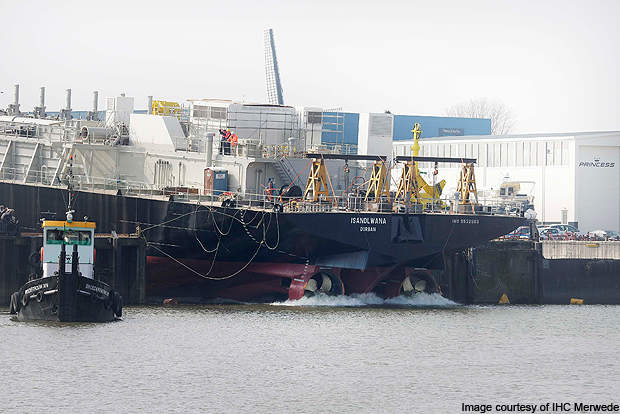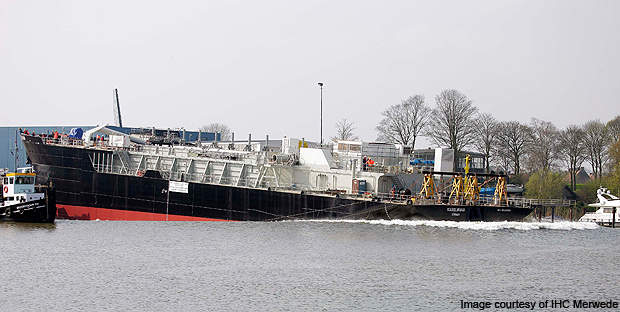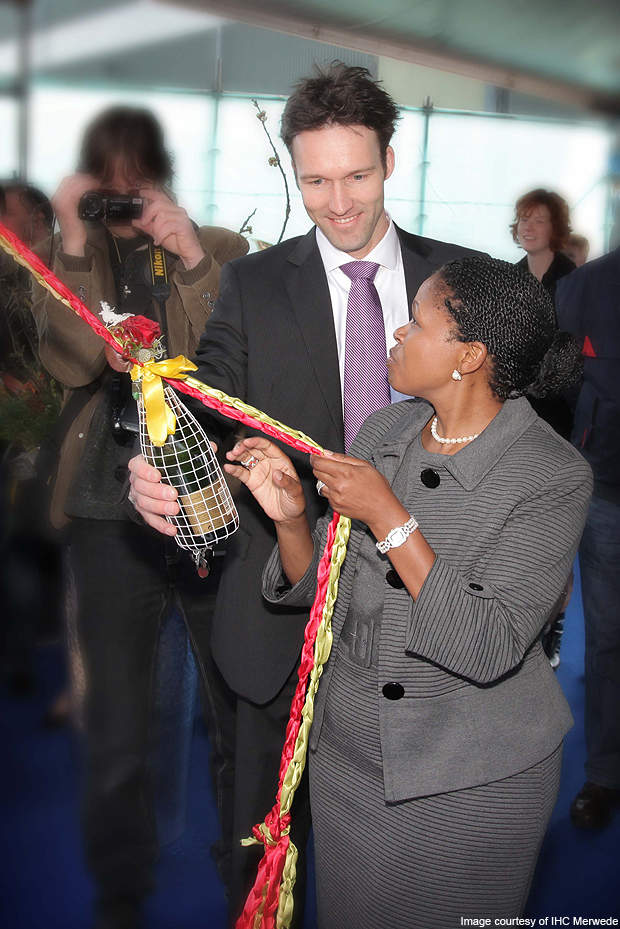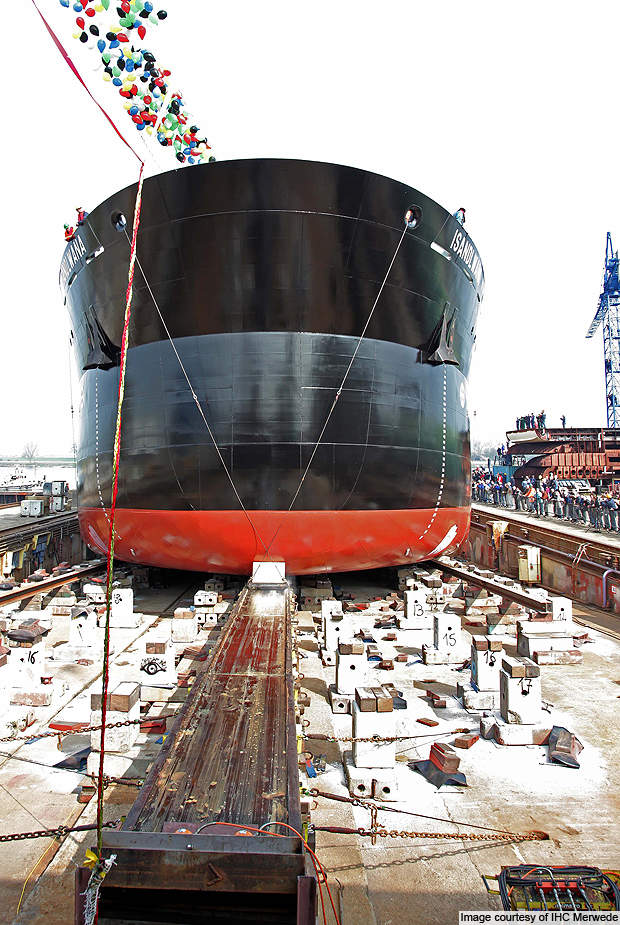Isandlwana is the third modern trailing suction hopper dredger built for the South Africa-based Transnet National Ports Authority (TNPA). Its naming and launch ceremony was held at the IHC Merwede shipyard, Verenigde Scheepswerf Heusden (VSH), in Heusden, the Netherlands, in April 2010. The ship’s construction was finished at the IHC Merwede yard in Kinderdijk, Netherlands.
In May 2008, TNPA awarded the design, construction and delivery contract of the vessel to IHC Dredgers. Construction of the ship began with the laying down of the keel in September 2009.
The ship sailed to its home port in Durban, South Africa, after the commissioning and dredging trials in 2010. Commissioning took place in October 2010.
The ship is named after a hill located in the KwaZulu Natal province, South Africa. The Isandlwana Hill became famous after the Anglo-Zulu war, fought in 1879. It was the British Army’s single greatest defeat at the hands of a native army.
Design and construction of TNPA’s trailing suction hopper dredger
The ship was designed to execute maintenance dredging works in the South African ports. Designed to accommodate 24 people, the deadweight of the ship is 6,155t.
Its length overall is approximately 91m, while length between perpendiculars is 84.95m.
The beam and draught of the ship are 20.75m and 6m respectively. The hopper capacity of the ship is 4,200m3.
The ship is equipped with electrically driven bow thrusters to achieve good manoeuvrability.
The accommodation and bridge are arranged together in the forecastle of the ship. The hopper and the suction inlet are located between the pump room and the engine room in the aft of the ship.
The ship is constructed in accordance with the requirements of the Lloyd’s Register of Shipping for Class: + 100 A1, Hopper Dredger, + LMC UMS.
Facilities and equipment onboard Isandlwana
Since the ship is engaged to perform dredging work, its starboard side is installed with a single trailing suction pipe fitted with a jet-water pipeline providing pressurised water to the nozzles in the excavating-type draghead.
It allows the ship to dredge up to a depth of 30m. Remotely-operated hydraulic winches and gantries are used to operate the suction pipe. A telescopic overflow duct controls the ship’s draught during loading.
Isandlwana has ten conical bottom valves for unloading. It also has a bow connection or a rainbow pipe to discharge the load directly into the sea.
The ship’s dredging installation also includes a longitudinal self-emptying system with bow discharge connection of 800mm. The system is fitted with hydraulically operated suction channel doors for rain bowing and discharging the claimed soil.
The dredged soil is pumped ashore through the system via a floating pipeline.
A diesel engine powers the single-walled dredge pump during the trail dredging, while the additional power for shore discharging or rain bowing is provided by the starboard main diesel engine.
The pump and pipelines are protected by a degassing system.
The dredging control system (DCS), which is a semi-integrated system based on PLC signal processing and PC/SCADA, remotely controls the dredging process.
The entire system can be controlled with keyboards and display units.
Rapid overviews of the entire process are generated and displayed on the colour video display screens by using pre-programmed process pages, service pages and diagnostic pages.
The DCS interacts with many instruments such as the DTPS, STPM and DLM monitoring systems, hopper volume and dry solid mass measurements, ALMO, automatic draghead depth control and mixture pressure, density and velocity measurements.
The ship is equipped with general service equipment, modern navigation equipment and an appropriate HVAC (heating, ventilating and air conditioning) system.
The deck house of the ship is fully air conditioned. The ship provides spacious accommodation to its captain, officers and crew in single and double cabins.
Ship engine
Isandlwana features an automated engine room suitable for unattended operation. The energy to the ship is supplied through two main diesel engines, two diesel generators and a dredge pump diesel engine.
The ship also has two 3x400V AC main electric systems, one 230V AC 50Hz system for lighting and civil use, plus two 24V DC systems for electric consumers.











